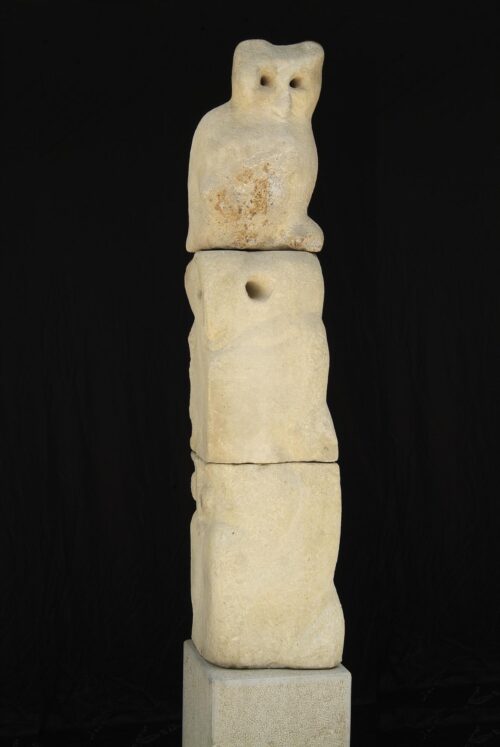
Raftopoulou Bella (1902 - 1992)
Owls, 1958
She began her studies at the Athens School of Fine Arts with Thomas Thomopoulos and on scholarship from the Averoff Estate continued at the Academie de la Grande Chaumiere in Paris with Antoine Bourdelle (1927-1930). At the same time, she attended courses at Dimitris Galanis’s workshop. She returned to Athens in 1930 and became member of “Omada Techni” [Art Group]. She travelled in Italy, Germany, UK and Balkan countries and in 1945 settled in Paris.
She began her exhibition activity in 1930 with a solo exhibition at the Stratigopoulos Gallery, followed by solo exhibitions in Greece and other countries; in 1980, a retrospective exhibition of her work was organised at the National Gallery in Athens. She also showed her work in group exhibitions in Greece and abroad, including the Salon des Tuileries and the Salon de la Jeune Sculpture in Paris, exhibitions with “Omada Techni”, the Venice Biennale (1934 and 1940), the Paris International Exhibition (1937) and Panhellenic exhibitions.
Bella Raftopoulou’s artistic development took a path towards abstract formulations, without, however, completely rejecting visual reality. Working mainly in stone, which she carved directly, she focused on the female figure as well as animals and birds. In her earliest works, the realistic approach reflected what she had learned from her professor and, in certain cases, even Rodin; a curvilinear approach and frontality are characteristic in her works. Her style progressively became more abstract and her forms more stylised, the background became limited and pronounced curvatures gave way to geometric and organic elements of a flat treatment, which added an architectural quality to her work. Apart from large-scale sculptures in stone, she also created small, abstract, expressionistic works in bronze and lead on a slate pedestal or background on subjects inspired by Greek mythology; also medals. She became especially involved with engraving, primarily wood printing, which echo the style of her sculptural work; during 1925-1927, she collaborated with the Sikelianos couple in their Delphic Festival, designing costumes and choreography, inspired by ancient Greek pottery images.

Owls, 1958
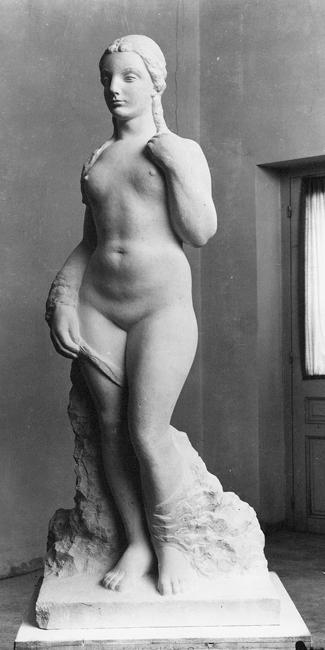
Spring, [before 1938]
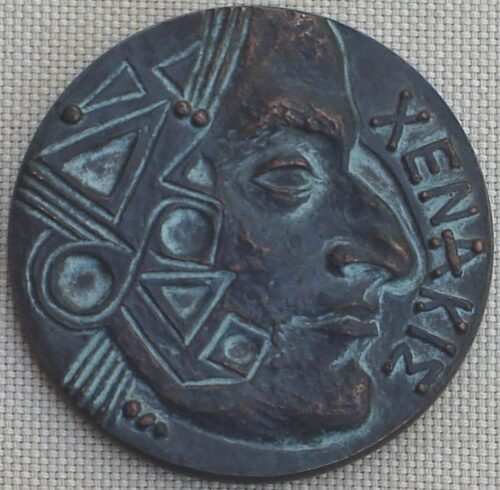
I. Xenakis, [before 1972]
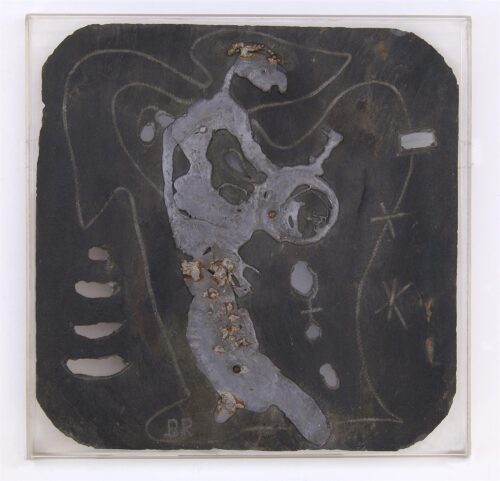
Orpheus, 1952
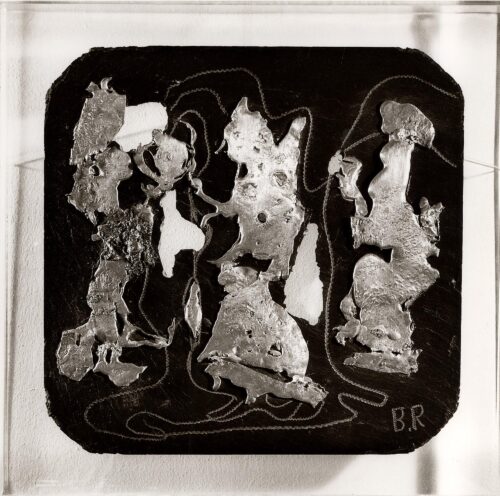
The Fates, 1954
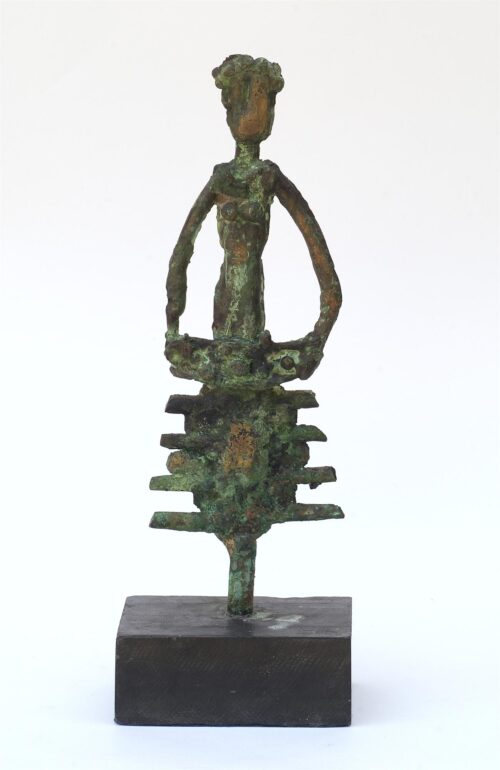
Figure, [after 1960]
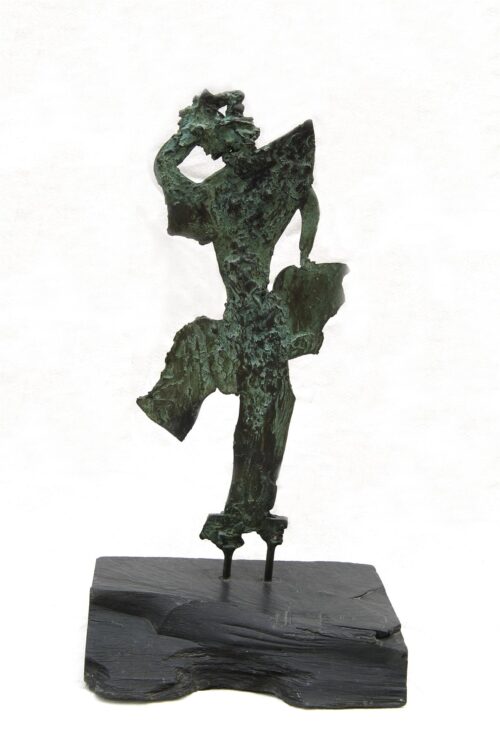
Phaedra, [after 1960]
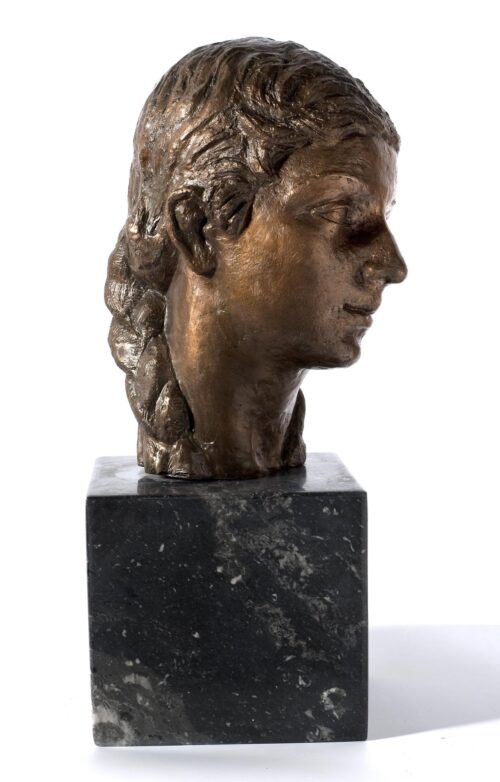
Maria, [before 1934]
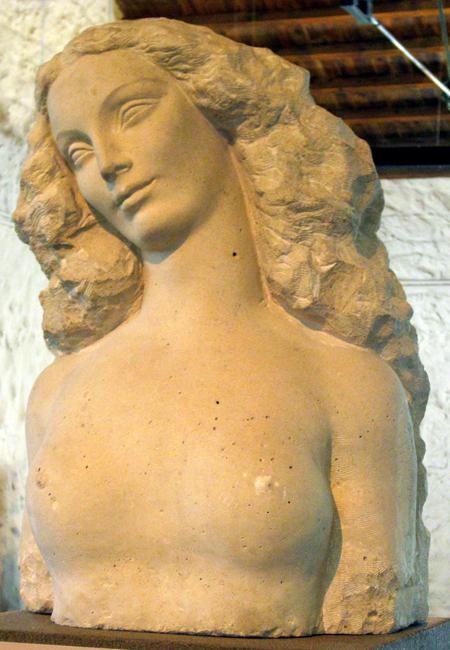
Maiden, [before 1940]
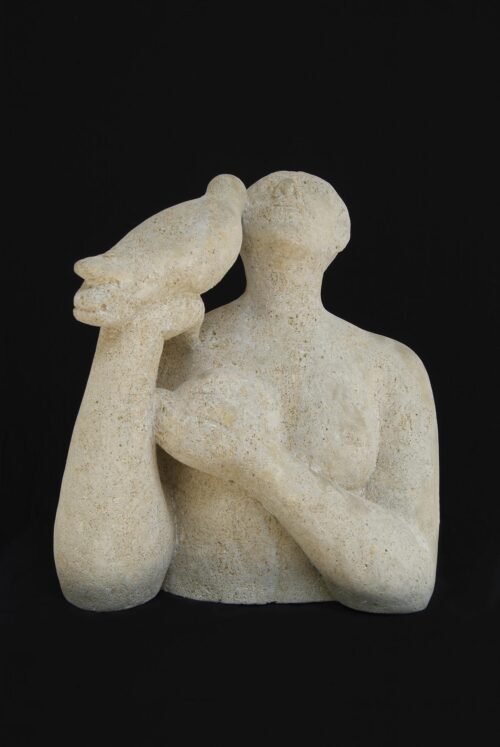
Woman with Pigeon, 1953
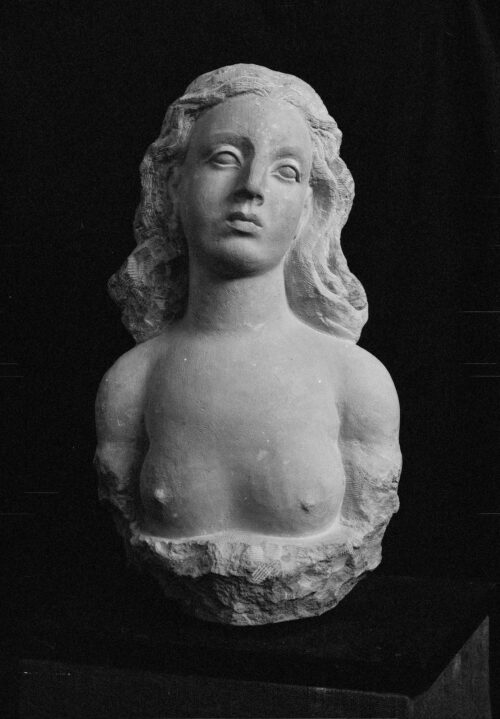
Maiden, 1931
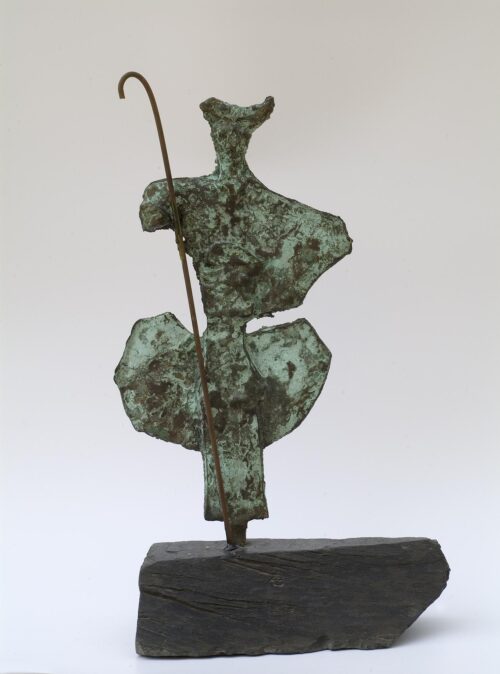
Agamemnon, [1960- 1966]
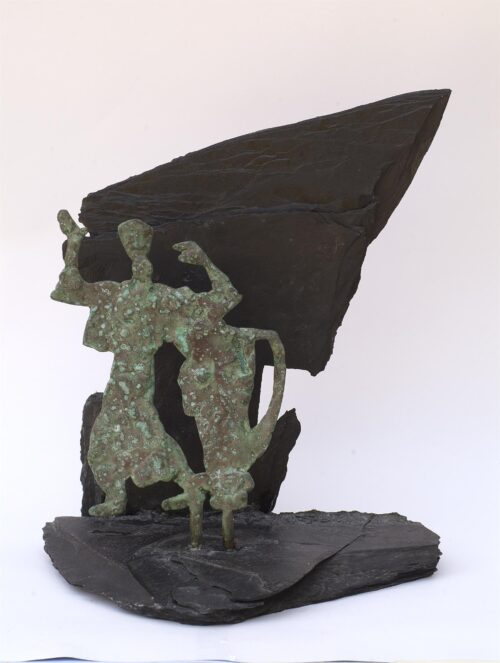
Electra, [after 1960]
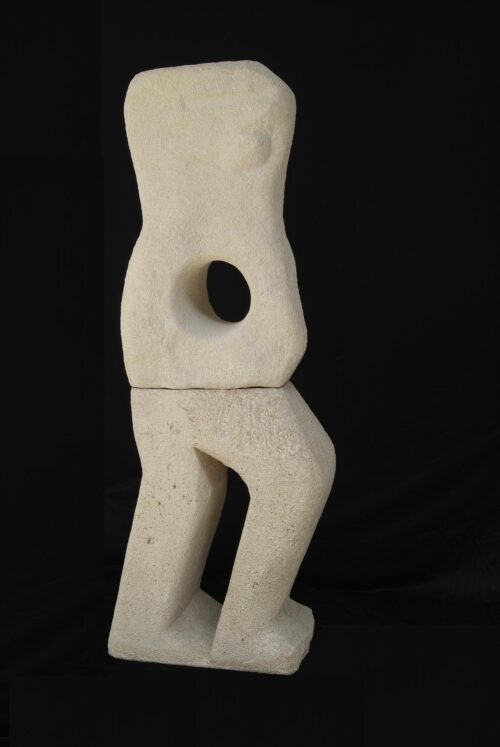
Anthropomorphic (variation), [1978]
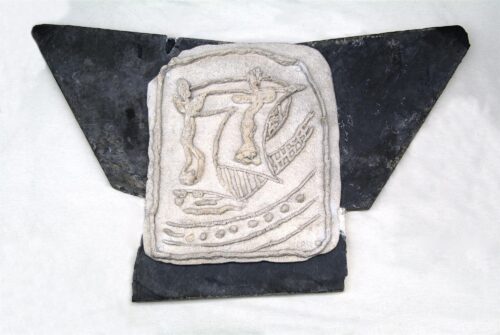
Theseus and Ariadne
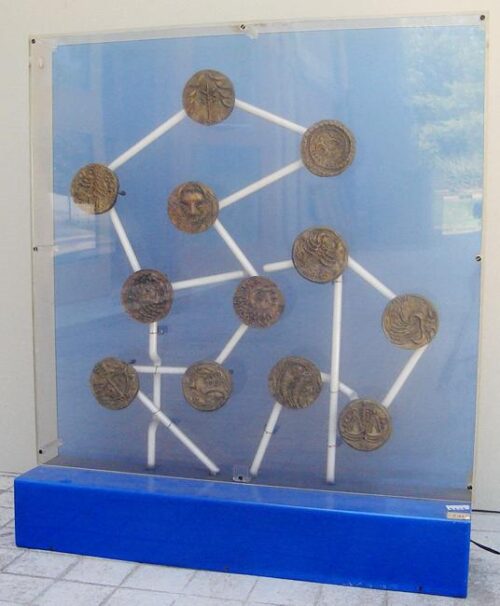
Zodiac, [before 1972]
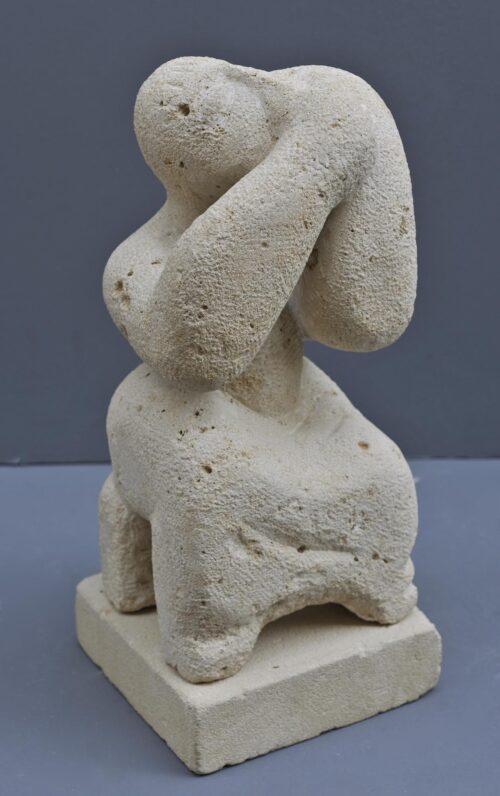
Mourning Woman
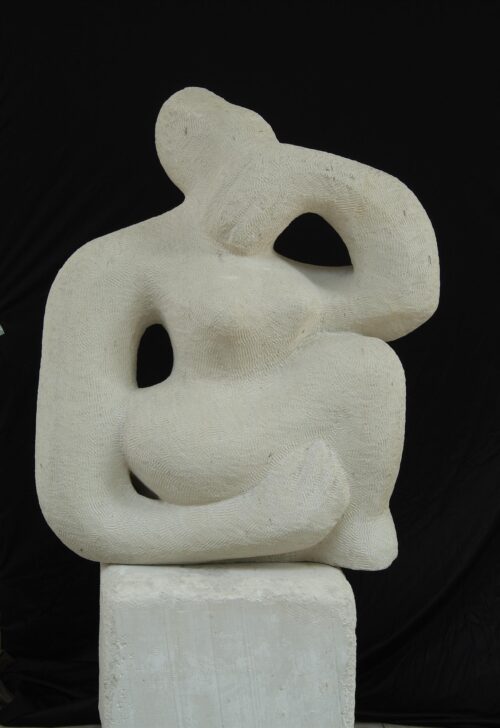
Meditation, 1957
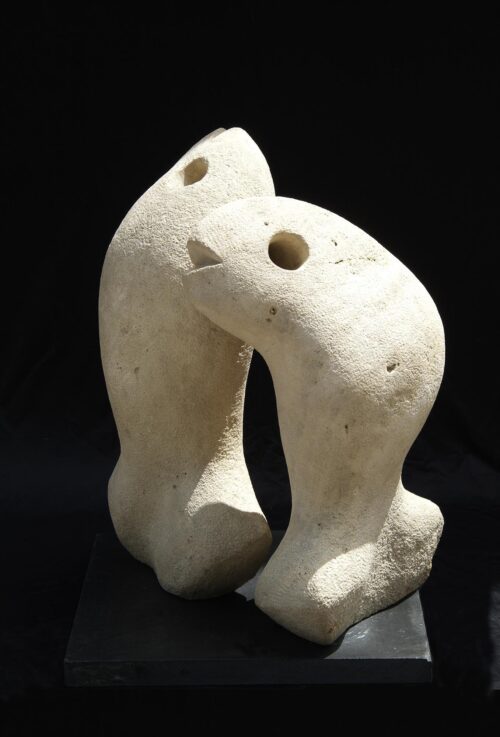
Dolphins, [c. 1955]
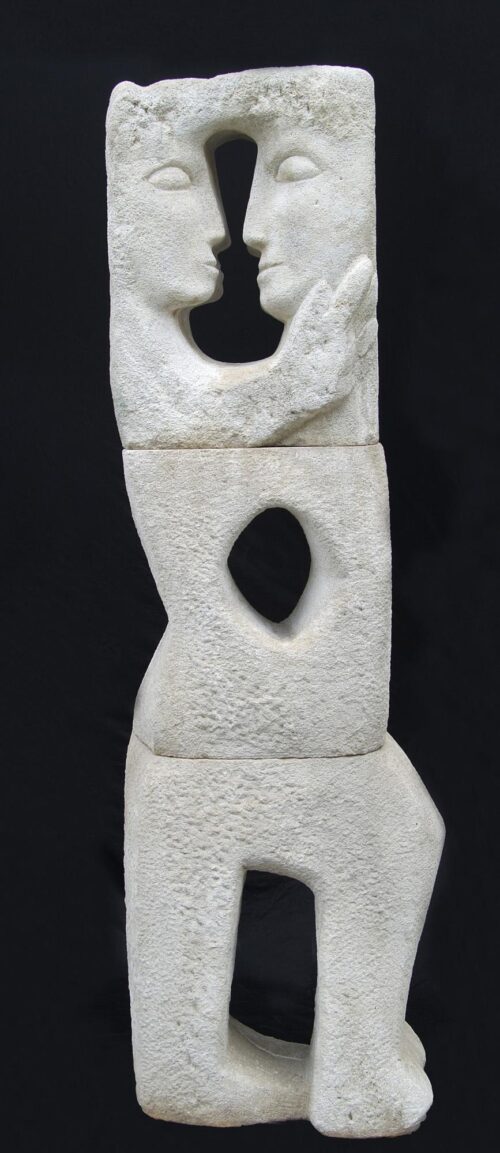
Couple, 1976
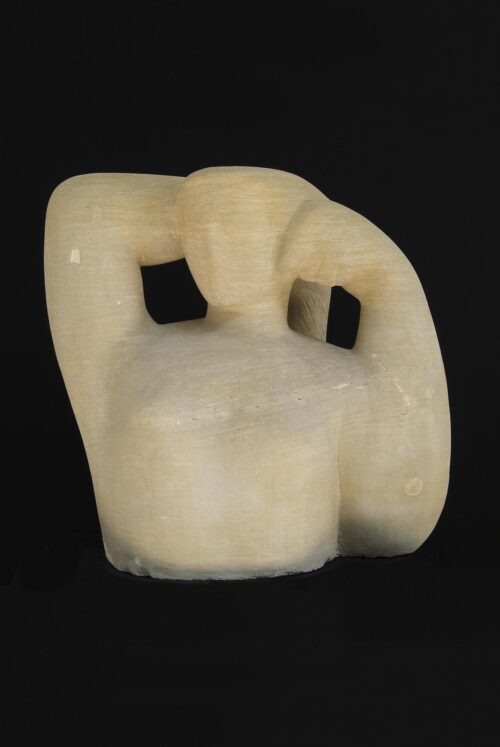
Freedom, 1955
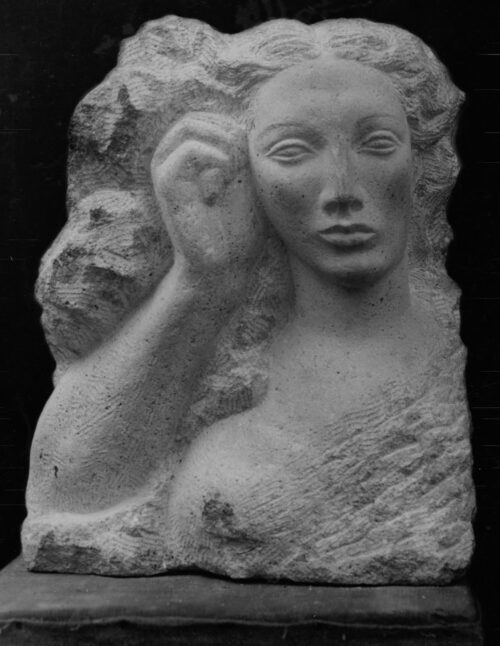
Sculpture, 1932
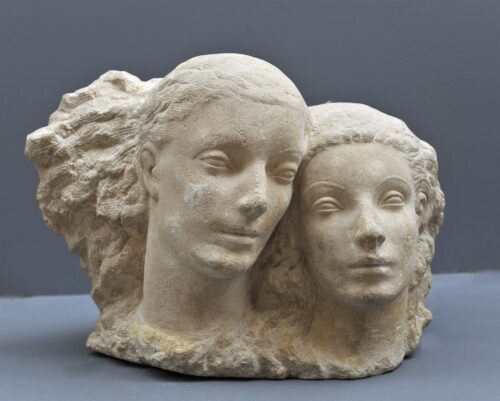
Two Friends, 1937

We use cookies to make our site work properly, to personalize content and ads, to provide social media features and to analyze our traffic. We also share information about how you use our site with our social media, advertising and analytics partners. Read the Cookies Policy.
These cookies are necessary for the website to function and cannot be switched off in our systems. They are usually only set in response to actions made by you which amount to a request for services, such as setting your privacy preferences, logging in or filling in forms. You can set your browser to block or alert you about these cookies, but some parts of the site will not then work. These cookies do not store any personally identifiable information.
If you disable this cookie, we will not be able to save your preferences. This means that every time you visit this website you will need to enable or disable cookies again.
These cookies tell us about how you use the site and they help us to make it better. For example these cookies count the number of visitors to our website and see how visitors move around when they are using it. This helps us to improve the way our site works, for example, by ensuring that users find what they are looking for easily. Our website uses Google Analytics for statistics reporting.
Please enable Strictly Necessary Cookies first so that we can save your preferences!